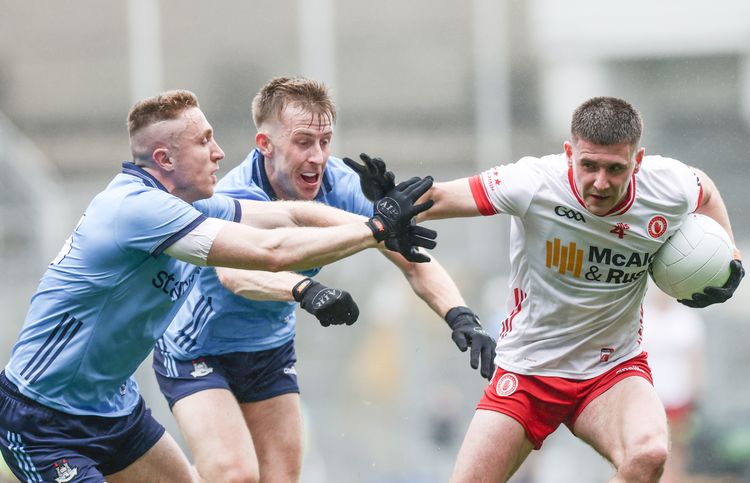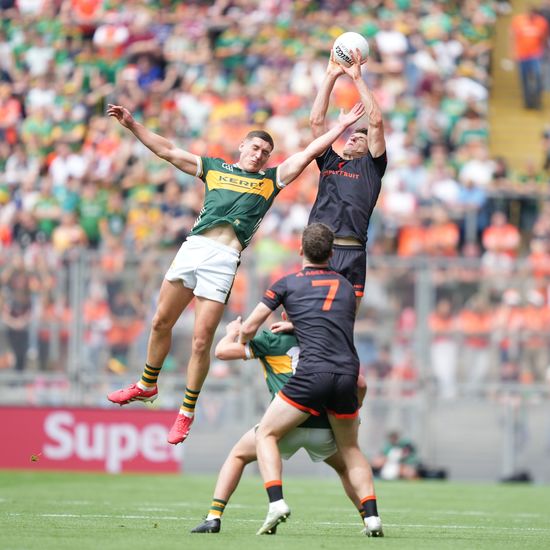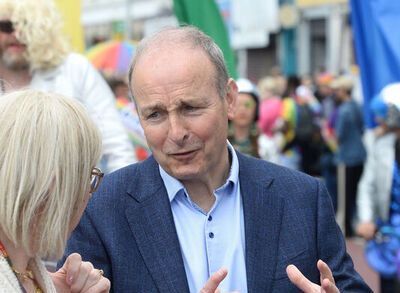Dan Harvey’s book is an account of the D-Day Irish
I landed on D-Day in water waist deep and waded ashore in the midst of the most incredible sight in history. The fleet of ships was terrific and my first sight of France was a church steeple with a hole clean through the side of it – a German plane appeared, and as if by magic six of ours were on his tail and down he came. ---Reverend Cyril Patrick Crean (Dublin), Chaplain 29th Armoured Brigade.
Seventy-five years ago, on 6 June 1944, D-day, the largest land invasion of the twentieth century began. Its scale was unprecedented. It was a task of enormous complexity and great difficulty, an immense undertaking, both stark in its magnitude and in the realization that if the Allied forces failed, faltered or otherwise came up short in Normandy – and war is unpredictable – then the war might drag on for years.
Thousands of Irish soldiers, both Irish-born and members of the Irish diaspora, were among the British, U.S. and Canadian units landing in France on D-Day and beyond to Berlin, until VE Day. They played a small but significant role in driving the German Army, first from France and then back across Europe to the German capital itself.
Their sacrifice, contribution and effort have had to be exhumed from the corners of Irish history. Theirs was often a narrative not related, a recognition neither commemorated nor celebrated. Yet their sacrifice, suffering and sorrow were all very real. The proper presentation of such participation is long overdue.
Like many soldiers who survived the Second World War, Irish veterans rarely spoke about their experiences, but in all, it is believed that some 120,000 Irish fought with the British. Many thousands more Irish Americans fought alongside them. The “D-Day Irish” are no longer to be ignored; the role they played will no longer go unwritten. Irish men and women of all ranks and none were involved in D-Day, and in each of the phases, facets and events of this epic story there was Irish participation.
One of the first U.S. paratroopers on the ground on D-Day was the 82nd’s Bob Murphy, an Irish-American member of the 505th Parachute Infantry Regiment’s Pathfinder platoon, the only “stick” to land intact on D-Day, a mile west of Sainte-Mère-Église.
Others – most – were far from where they should have been; they had crossed the “start line,” the first shots had been fired and the plan had fallen apart. But the men intended to do what they were sent to Normandy to do.
There was little or nothing the twenty or so American parachutists could do, coming down directly onto the village square of Sainte-Mère-Église, their arrival lit by a blazing building, one unfortunate even being sucked into and engulfed by its flames.
Others were mowed down, instantly killed by the frenzied machine-gun fire of the frightened German garrison. However, dawn was to see Sainte-Mère-Église liberated by the 82nd, their objective achieved; the first French village to be freed of German occupation. The Nazi swastika that had hung from the town hall for four years was removed.
Captain Patrick James Ness of Michigan, whose mother was Irish (a McAuliffe), flew four sorties over Normandy on D-Day in his P-47 Thunderbolt (“the Jug”) with the U.S. 81st Fighter Squadron. His initial memory of the day was being woken early to discover that while they (the pilots) were sleeping, their fighter bomber aircraft had been painted overnight with the black and white striped identification markings unique to D-Day, “in poor quality paint, more like whitewash.”
They had come over from America in February, 1944 and flew their first operational missions commencing 1 May out of Leamington airfield. His father, a Norwegian immigrant who arrived in the U.S. in 1872, was a mining engineer and so he gravitated towards that industry, which had a large Irish contingent. After eleven years in New York he went to Michigan and became involved in the Ancient Order of Hibernians. This brought him into contact with his soon-to-be “Irish” wife, to whom Patrick James was subsequently born. When the Second World War broke out, Patrick joined the 81st Fighter Squadron and so followed his subsequent D-Day involvement.
For his part, Patrick James Ness was to find himself in “U.S. Air Force Intelligence,” loaned (seconded) to the OSS, and was involved after Victory in Europe (VE) Day, 8 May 1945, in seeking out German scientists and sending them to the United States to work on “military projects.” In all, he saw service from 1942 to 1968, fought in three “hot” wars (the Second World War, Korean and Vietnam wars) and at the height of the Cold War flew a B-47 bomber for Strategic Air Command. His mantra throughout his service was “You do not volunteer for anything, you do not turn anything down.”
Another Irishman who was involved in D-Day was Joe Walsh, from Athy, County Kildare. On leaving the Irish Army in 1942, Walsh joined the RAF and landed in Normandy in late June 1944 with the 715 Motor Transport and Light Repair Unit. He was keen to go to France to see action, and interviewed in James Durney’s, “Far From the Short Grass,” he would recall: “The Irish were not worried about the danger. They always went for the most dangerous jobs; tanks, tail gunners and paratroopers – the paras were full of Irish.” He was sent to France and reached there around the time of the Allied breakout from the bocage countryside. He recalled: “We did not see much action. I remember a V-1 rocket landing in a field beside us once though it didn’t cause any casualties.”
These Vergeltungswaffe (V, for vengeance) V-1 and V-2 flying bombs, unmanned aircraft loaded with explosives, were directed towards London mostly, timed to fall on the city and its population. The first one (of ten fired that day) arrived in London on 10 June 1944, killing six people. Up to 100 per day began arriving in the weeks and months thereafter, and in all it is estimated that about 8,000 V-1s fell on England before the launch sites were overrun by Allied ground troops in September. Among the last to be killed by one of them, tragically, was Captain Guinness, heir to the Guinness Brewing industry dynasty.
Destabilizing also was the Allied bombing of known V-1 launch sites. These perpetual air raids on the wider area and on transport, infrastructure and military targets hampered the production and development of other such “products,” like the V-3, a multi-barreled gun capable of firing huge 300-pound shells across the English Channel at a rate of one every six seconds.
This “London Gun” project never properly got started, so the Americans went bigger again, this time attempting to pack old aircraft full of explosives.
Flying them close to the launch sites, the pilots would bail out and the explosive-laden aircraft would be remotely controlled and guided to the launch site targets. The premature explosion of some planes, killing the American pilots along with them, put an end to this initiative, but not before Joseph Kennedy Junior, who was being carefully groomed to be the future Irish-American President of the United States, was among those unfortunate pilots. A graphic illustration of how war destroys potential as well as people, it fell to his younger brother, John F. Kennedy, to become the family’s candidate for the presidency.
For the first time, “A Bloody Dawn,” facilitates the telling of the wide-ranging, important Irish involvement in D-Day, and it places Irish participation on the front page, by populating the undertaking through an Irish lens. The story of D-Day is enormous, and the Irish have a rightful place among its many chapters.
“A Bloody Dawn: The Irish at D-Day,” by Dan Harvey, is published by Merrion Press (Paperback, $24.99, 250pp, www.merrionpress.ie).









